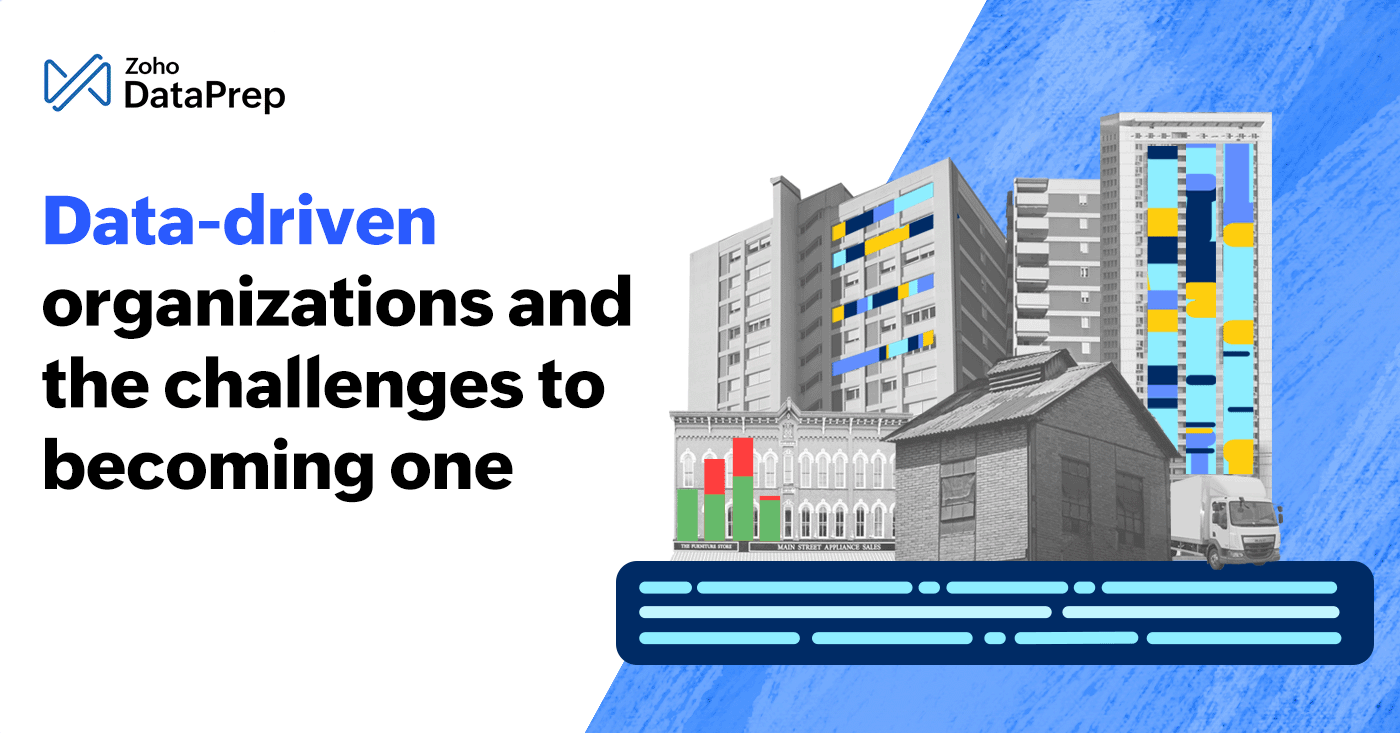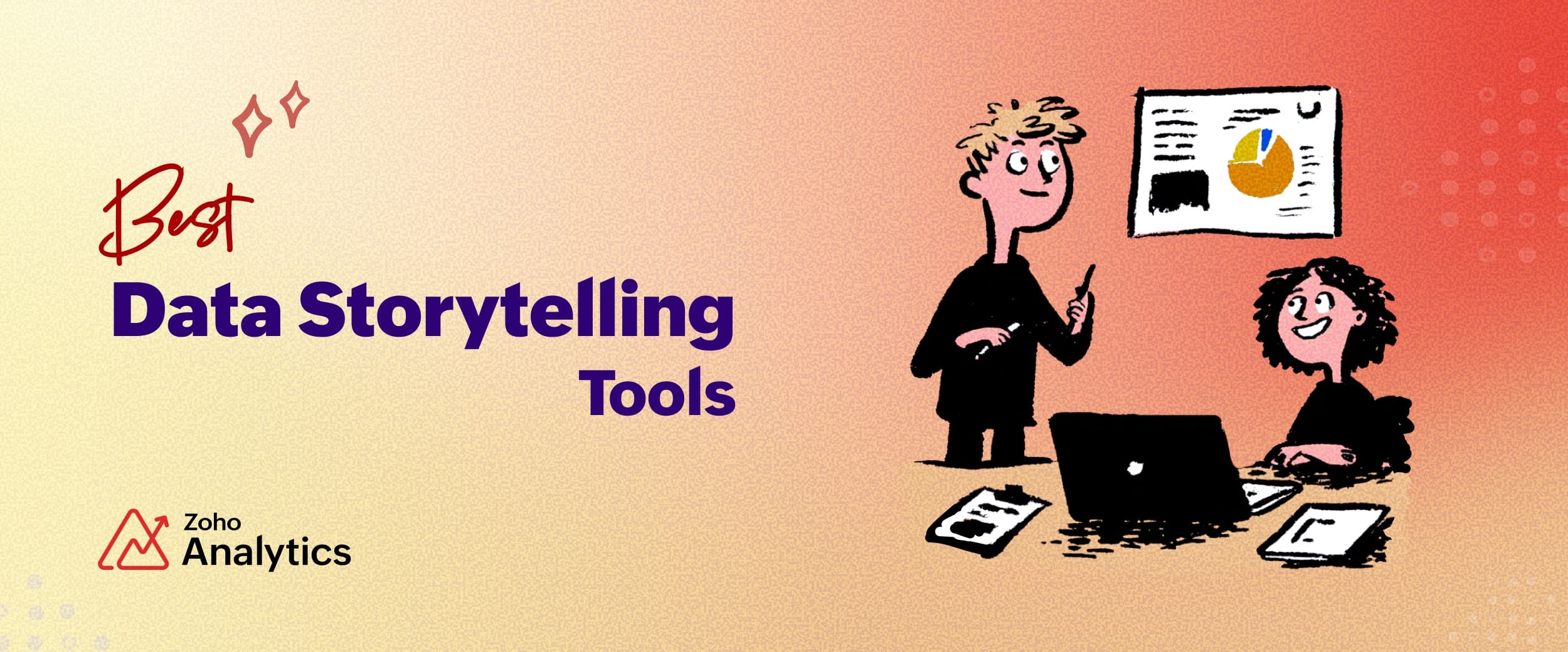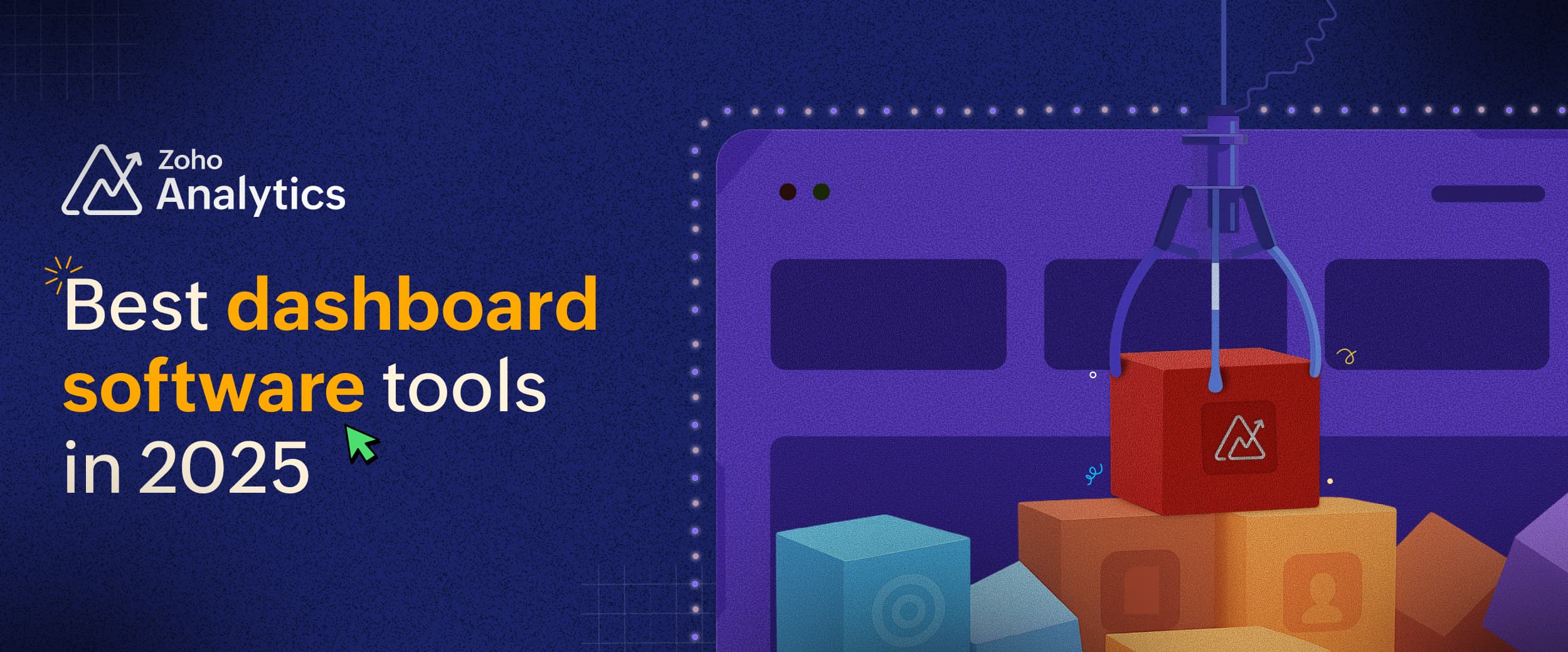- HOME
- BI & Analytics
- Data-driven organizations and the challenges to becoming one
Data-driven organizations and the challenges to becoming one
- Last Updated : June 5, 2025
- 304 Views
- 4 Min Read

A recent McKinsey survey shows that data-driven organizations are not only 19 times more likely to be profitable but also 23 times more likely to acquire new customers. This means that organizations are on the right path when strategic decisions are based on data rather than gut feelings.
So what is a data-driven organization?
When an organization collects data on all aspects of its operations to derive actionable insights, it's considered a data-driven organization. With the evolution of generative AI and low-code/no-code solutions, the percentage of organizations adopting a data and analytics culture increased from 21% in 2023 to 43% in 2024; but only a fraction of them are fully data-driven. More than 60% of these organizations are good at collecting data, but they're still experimenting and learning to define their data strategy.
Challenges to becoming a data-driven organization
Shifting to a data-driven culture isn't easy. It requires an organization-wide effort, where every team delves into their operations and identifies what improvements are needed to boost productivity, increase revenue, and reduce expenses. Only when definitive goals are set can appropriate data be collected for analysis. Let's look at the different challenges that hinder organizations from being data-first.
Challenge #1: Lack of unified vision
The biggest problem in building a data-driven organization is the absence of a unified strategy or vision for data utilization. When an organization's culture isn't data-centric, there's a huge loss in revenue, productivity, and efficiency.
The fact is that every organization has their purpose; they might know how to grow, but what they fail to realize is that data can give them a clearer path to move ahead and fast-track their growth.
Challenge #2: Organizational silos and scattered data
Organizations often work in silos, where each team has their own goals. This helps them work with a singular focus—but when analyzing their performance, it's easier to do it at the team level, helping them reach their targets and maintain timelines effectively, resulting in better efficiency and productivity.
Where a siloed structure goes wrong is when one looks at it from an overall organizational perspective, where no proper strategy is put in place for each team to collaborate and work together efficiently. This is especially true if you look at it from a data standpoint, where the same data can be useful for multiple teams. If each department collects data in isolation, focusing on their own metrics and goals, the organization could be losing money without realizing it.
With the growth of SaaS, organizations rely even more heavily on multiple solutions to streamline their tasks—but the biggest drawback of using a variety of software is that data is scattered in multiple places and in various formats. Getting that data organized in a single place is a herculean task, because each solution has different stakeholders.
Challenge #3: Poor data processes
When we talk about organizational silos and scattered data, their advantages outweigh the fact they create a data nightmare. The actual challenge is the lack of data strategy with a dedicated process on how each team should use, store, and access data.
Since most organizations don't have defined data flows, each team creates their own process and works with data in the way they deem fit. This is one of the main reasons why there are data breaches and security threats. By not bringing data together and analyzing it, you also miss out on valuable insights that can help scale your business faster.
Challenge #4: No data governance control
Data governance control is also a part of data strategy. Organizations need to have proper control over how data access and editing privileges are granted to its users.
Defining a proper data governance process is crucial because 88% of security threats happen due to human error. Effective governance control means that the data is consistent, trustworthy, and safe from external threats.
Challenge #5: Lack of resources and tools
Every organization has to deal with scattered, inaccurate, and ineffective data, which makes it challenging to collate it for analysis. This is such a problem that enterprises have a separate team dedicated to fixing dirty data and collating it, which requires coding skills and takes up a lot of time. Not all organizations can afford to hire skilled developers and buy expensive tools to work on data, so it's essential to try and adopt tools that can automate the process of data cleansing, preparation, and management without breaking the budget.
To become a data-driven organization, a company needs to adopt a data-first culture. It starts with top-level management, where appropriate data strategies are put in place. Then it's a matter of getting your employees to adapt, which is sometimes difficult, as it's hard to unlearn certain things and adapt to new processes.
If you're ready to become a data-driven organization, start your data management journey with Zoho DataPrep. Start your 14-day free trial now! . Also, If you're looking for a provider of embedded analytics for SaaS, you can get started here.


